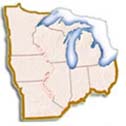Connect With Us
|
Endangered Species PermitsChoosing the Right Permit
If you are engaged in an otherwise lawful activity where a listed species may be adversely affected, and the purpose of your activity is not scientific research or enhancement of listed species, you may need to obtain an Incidental Take Permit (section 10(a)(1)(B)). Examples of activities that may require an Incidental Take Permit include, but are not limited to: construction and/or development activities or in-stream or watershed activities that may impact listed species.
If you would like to engage in an activity that may benefit a listed species through conservation of habitat, you may need an Enhancement of Survival Permit. Examples of activities that may require an Enhancement of Survival Permit include actions to enhance, restore, or maintain habitat (e.g., restoring fire by prescribed burning, restoring hydrological conditions), so that it is suitable for listed species.
If you would like to engage in scientific research on or conduct activities to enhance the propagation or survival of a listed species that will likely result in the species being harassed, captured, harmed, possessed, or killed, a Recovery and Interstate Commerce Permit (section 10(a)(1)(A)) may be required. Examples of activities that may require a section 10(a)(1)(A) permit include, but are not limited to: abundance surveys, genetic research, relocations, capture and marking, and telemetric monitoring. Under certain circumstances, a section 10(a)(1)(A) permit may also be required to possess tissues and/or body parts of listed species.
The following six scenarios will help you determine what type of Permit is most appropriate for a given situation. Your choices are: Research/Recovery Permit, Incidental Take Permit, and Enhancement of Survival Permit. Scenario 1:A Native American Tribe wants to voluntarily enhance a riparian area along 3 miles of stream that flows through the property. They want to do such things as planting cottonwood poles and willows, but they have come to you because they expect they may draw in some federally listed threatened and endangered species. They might even attract some species not yet listed.
Scenario 2:A private developer wishes to build houses in an area that supports an endangered snake. The number of snakes present and their distribution on the site are not known; survey work is needed to locate the snakes so their habitats can be avoided.
Scenario 3:A non-profit organization specializes in captive breeding of a southwestern frog that is on the list of Federal species that are candidates for listing under the Endangered Species Act. This non-profit would like to set up a program to reintroduce this rare frog to stock tanks on cattle ranches owned by interested private citizens in five specific counties in southern Arizona.
Scenario 4:An extremely imperiled federally listed endangered species lives on private property. The landowner owns a forest on which he has a common species of tree that this imperiled species utilizes for feeding and breeding. At least two individuals of this endangered species have been attracted to a large stand of this particular species of tree that is at the edge of the property. The landowner anticipates cutting these trees at some time in the future to maintain the viability of his timber business. It is anticipated that two stands will be mature enough to be cut NOW, with others maturing at 10 years and 30 years.
Scenario 5:The State Department of Transportation has to mow its road rights-of-way regularly to maintain safe highway conditions. An endangered butterfly lives in the grasses along the roadways. This species prefers areas where there are few trees or shrubs. The Department of Transportation realizes that it may take individuals of this species as it mows its roadways on a regular rotating basis.
Scenario 6:The only two known populations of a listed plant occur on National Forest land. The Forest Service has identified other habitat areas on the National Forest that appear to contain the necessary habitat characteristics; however, the areas have been degraded by off-road vehicles. The Forest Service wants to restore these areas, collect seeds from the existing plant populations, grow them in a greenhouse, and then plant them on the restored sites.
|
||||||||||||
Last updated:
April 14, 2015
|
|||||||||||||




